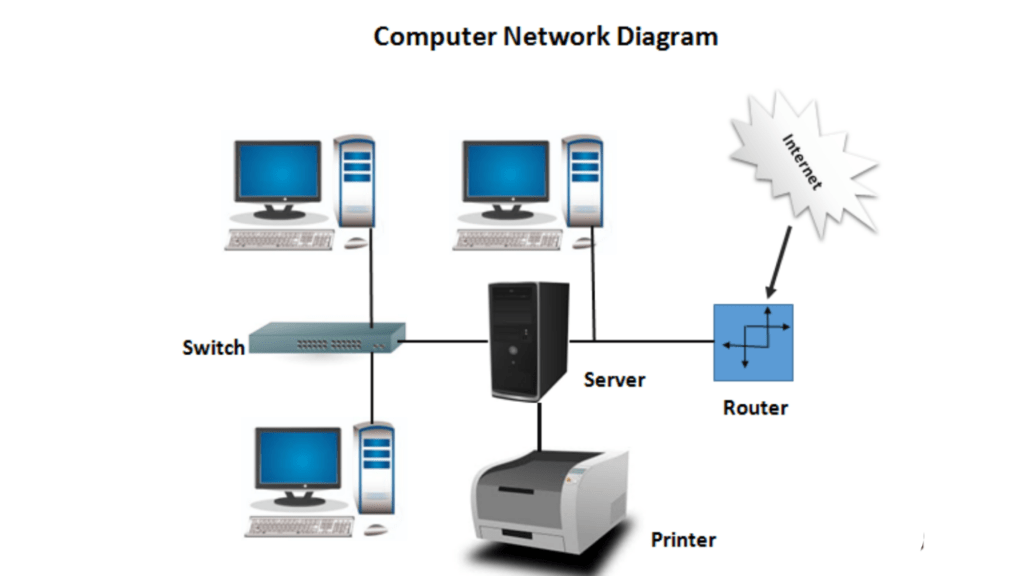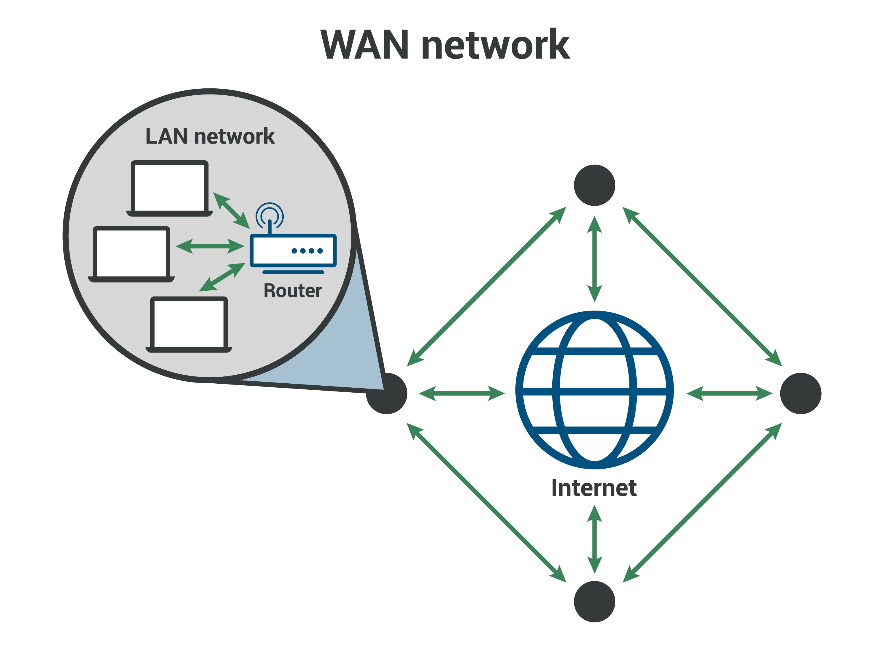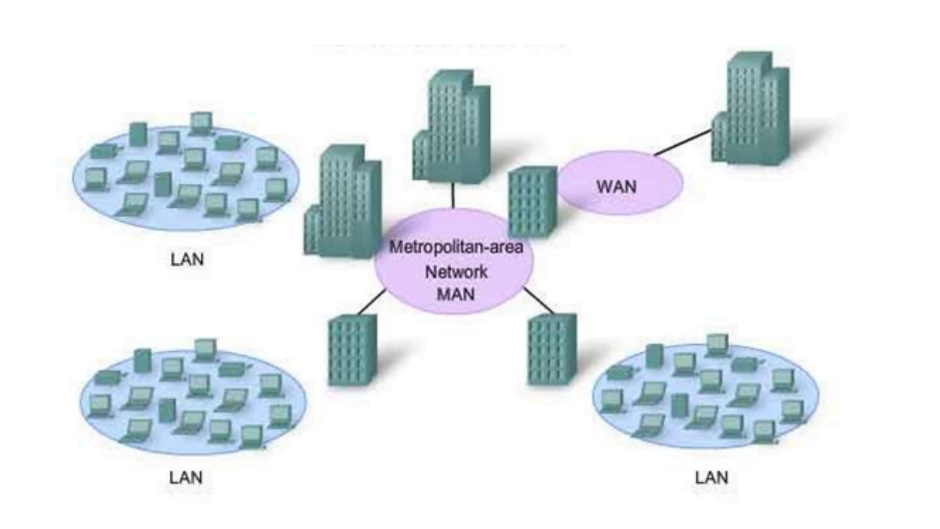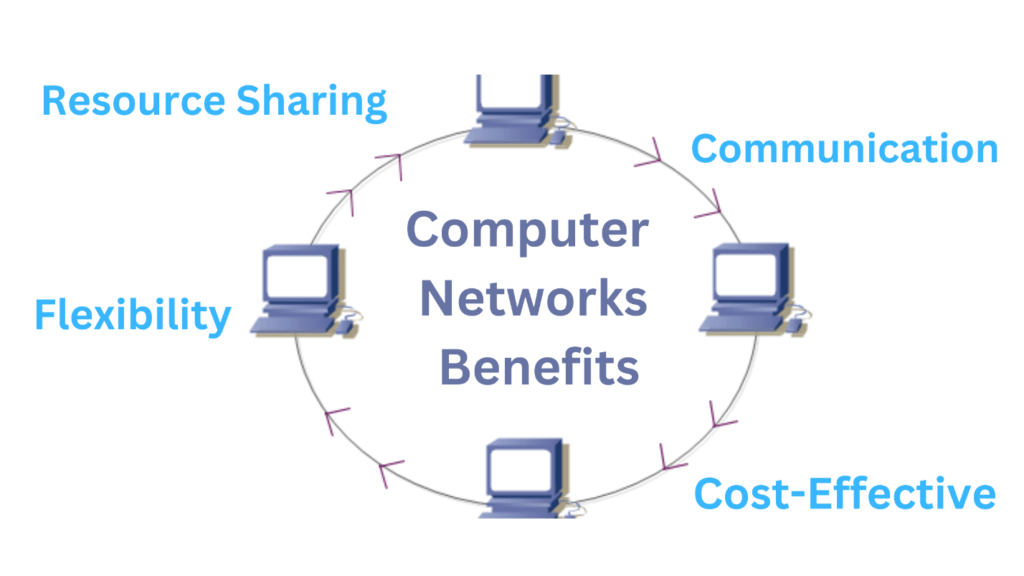Computer networks manage this world that we live in. Traditional communication networks connect servers, workstations, and individual computers one at a time using Ethernet and other wires. However, more sophisticated technologies are now available on the market, allowing connections between numerous places via wireless technology.
We are becoming increasingly in need of computer networks these days because of their different benefits. But you must be wondering what computer networks are and how they work. In this article, we will explain to you in-depth about computer networking along with its types and components. Further, we will explore why we need computer networks. So, let’s start with the fundamental introduction. Let’s go for it!
What is computer networking?
In basic terms, a computer network is a set of two or more computers connected with each other using a communication link. Servers and mobile phones are two types of computer devices. These devices can link wirelessly or physically, like with fibre optics. The main objective of computer networking is sharing information and resources across computers.
What are the Basic Components of a Computer Network?
The basic components of a computer network can be classified into two types:
1) Hardware components
2) Software components
Hardware Components

The physical equipment needed to create a network is known as the hardware components of a computer network. Devices like switches, routers, and firewalls are among them. Let’s examine each of these in more detail:
Router: A router is a network bridging tool that connects various wired or wireless networks. It links two diverse networks using comparable protocols. Compared to other gadgets, they provide better traffic management. The router must know the network address to pass the data. Reduced network traffic results from the router’s capacity to regulate the data that passes through it.
Switches: A switch is a networking tool connecting many computers to one local network. As data packets are received, switches can inspect them, identify their source and destination devices, and roughly forward the packets. Switches can send and receive information at the same time.
Firewalls: A firewall is a security technology that aids in preventing unauthorized access to the system.
Software Components
The applications needed to execute on the hardware devices are the software components of a computer network. These consist of networking software, operating systems, and various applications. Let’s examine each of these in more detail:
Operating Systems: An operating system is necessary to properly operate a computer network. Windows, Linux, and macOS are the most frequently using operating systems for networking.
Networking Software: Network software is a unique software used to manage and control all the resources used in a computer network. Active Directory and DNS servers from Microsoft are the most widely used networking technologies.
Applications: Applications are programs utilized on a computer network to carry out particular functions. The most popular applications are file-sharing apps, email accounts, and web browsers.
How does computer networking work?
Nodes and links are the two main components of a computer network.
Nodes are tangible objects like file servers, modems, and personal computers. They serve as connection points and can transmit, receive, or forward data.
The links connect the nodes, which enable them to communicate with one another. These come in cable, optical, and wireless varieties.
These connected nodes within a network are identifiable by a network address and frequently have hostnames that are easier for people to remember. The network infrastructure’s design determines and specifies the communication protocols the nodes must adhere to receive and send data.
Communication protocols come in a wide variety of forms. Modern computer networks frequently use packet-mode transmission, where a network packet represents a unit of data.
As previously indicated, we can use cable, optical, or wireless radio frequency networks to send data between nodes. These connections can be set up and organized in various logical and physical ways. The relationship between the links and nodes is referred to as network topology.
What are the different types of computer networks?
The following are the five main types of computer networks:
Local Area Network (LAN)

A limited area network (LAN) is a networked system with geographical and size restrictions. It typically connects computers and other devices inside the same building or office. It is used by small enterprises or as a test network for relatively small prototyping. Most LANs connect devices using Ethernet. Each device on a LAN has a unique IP address, allowing devices on the LAN to communicate with one another.
Wide Area Network (WAN)

A computer network that spans a substantial geographic area, such as a city, nation, or continent, is known as a wide area network (WAN). WANs are designed for dependable and secure long-distance connectivity. WANs are frequently used to link up LANs. The biggest WAN currently in use is the internet.
Wireless Local Area Network (WLAN)

A Wireless LAN is a wireless network that connects computers and other devices in a constrained space, like a home or business (WLAN). WLANs use radio waves rather than wires to connect devices. A WLAN router is used to connect the computers to the internet and connect them.
Metropolitan Area Network (MAN)

A computer network that spans an entire city or town is known as a metropolitan area network (MAN). MANs are typically used to connect various LANs for sharing resources and data.
Campus Area Network (CAN)

A computer network that spans the entire college or university campus is called a campus area network (CAN). It is intended for all of the buildings and dormitories on a school’s campus and all of the equipment to be connected by CANs.
Now that we have learned about the different types of computer networks let’s move on to learning about their benefits along with examples.
To get in-depth knowledge about different network types, click on https://www.youtube.com/watch?v=4_zSIXb7tLQ
What are the advantages of computer networking?

Computer networks facilitate communication and resource sharing among network users. Can you imagine life today without email, blogs, chat, online news sources, and other internet-based services? It would be challenging to accomplish anything!
To understand how computer networks are beneficial, let us discuss the advantages of computer networking along with their examples.
1. Resource Sharing
Sharing resources among other computers is one of networking’s most important benefits. This comprises printers, scanners, file servers, and other storage hardware.
For example, employees in an office setting can store their documents on a shared file server instead of having individual personal storage devices.
2. Communication
Networking enables communication across various computers and gadgets is another significant advantage. This covers both voice and data communication.
For example, Voice over IP enables phone calls over the internet instead of a conventional phone connection.
3. Cost-effective
Keeping your data in one place might also help you save money and increase productivity.
For example, with shared access to customer and product databases, workers can handle more clients in less time.
4. Flexibility
Networking also allows consumers more flexibility regarding where and how they can access resources.
For example, an employee can access all their files as if they were in front of their office computer by logging onto their work computer from home using a remote desktop application.
These are only a few examples of the benefits of computer networking. To learn about more benefits of computer networks, click on https://www.youtube.com/watch?v=iyLWgpghjHY
Conclusion
We hope this article has helped you learn more about computer networking. As you can see, computer networks have a lot to offer regarding advantages and benefits. If you want to learn more about this topic, we suggest checking out our other blog articles on this subject!
Read More: What is computing power?
